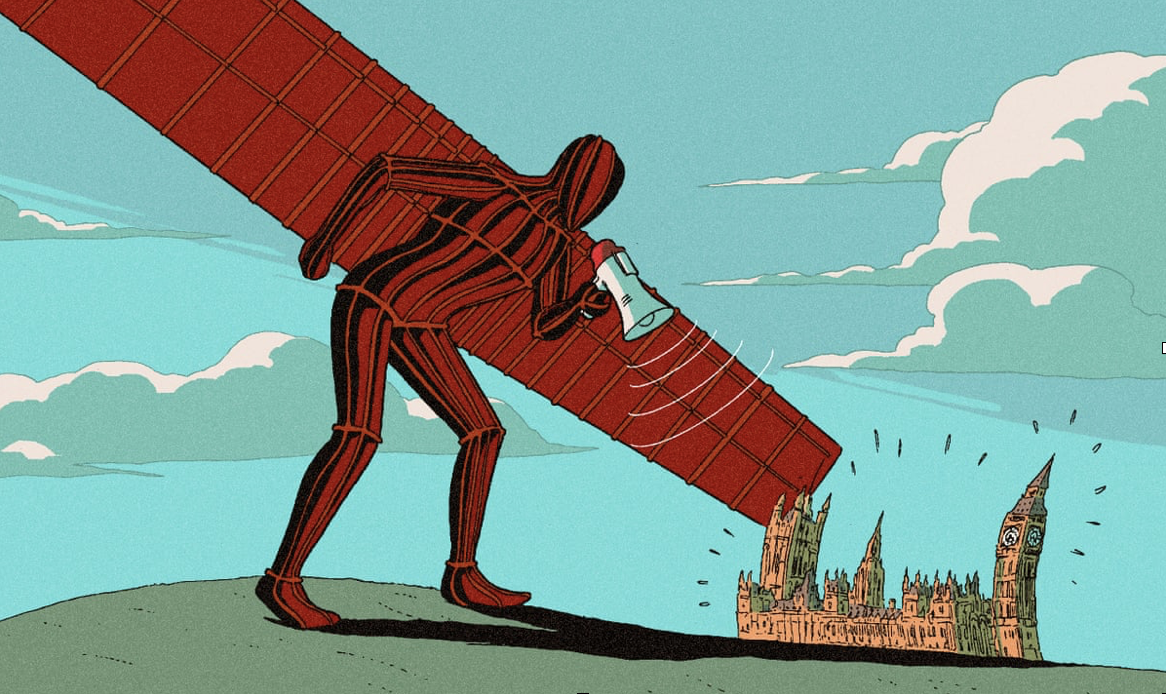The Hindu Editorial Vocabulary- Download Free PDF

Article to improve your reading skills and enhance vocabulary .Westminster beware: the north is ready to take ‘levelling up’ into its own hands.
Resolute mayors and angry MPs have a new confident voice – and they will use it to make the Tories’ empty words a reality
A cold realisation is haunting British politics. For at least six years, turbulence and chaos were the default setting of power and politics. Now, the arrival of Rishi Sunak’s comparatively dull brand of Tory technocracy feels like an uneasy pause, allowing us to marvel at the contrast between a long spell of drama and noise, and the country’s everyday reality. Put bluntly, we are back where we ever were, and few aspects of our national condition better illustrate that than the gap between England’s north and south.

- Download Class24 App for Updated Current Affairs, Free Topic-Wise Quizzes and Free Mini Mocks
- Download Free Study Material Here
Yes, the usual caveats apply: inequality, poverty and decaying public services are problems spread around the whole of the country, and London presents examples as glaring as anywhere else. But the north-south divide remains the most vivid manifestation of the English malaise, and the serial crises we now seem to be locked into are making it much worse. At the same time, however, reducing the north’s condition to hapless misery misses a growing confidence and coherence that the chaos of the past few years only seems to have increased. Although levelling up has largely turned out to be a fantasy, our politics might just be showing signs of being radically changed by northern voices, speaking not just for the places they represent and govern, but the wider region.
One aspect of recent history is too easy to forget: the contrasts between experiences of the pandemic in different areas of England. Using a definition of the north that grouped together the north-east, north-west and Yorkshire and the Humber, researchers at Newcastle University found that Covid mortality in the pandemic’s first year was 17% higher in the north than in the rest of the country. According to the research, about half of that disparity was explained by “higher deprivation and worse pre-pandemic levels of health”. To add insult to injury, the north also experienced nearly six weeks more of the most stringent lockdowns than the rest of the country. Those wounds are still raw. Over the past year, I have been repeatedly struck by how conversations with people in northern towns and cities go straight to the pandemic and its legacy in a way that rarely happens in the capital.
Then came the cost of living crisis. In July this year, the Centre for Cities thinktank published a striking report showing that soaring prices were affecting places in the north far more than affluent areas concentrated elsewhere in the country. Housing in the north tends to be less energy efficient, average wages are lower, and petrol accounts for a greater share of people’s spending. The result, said the research, was punishing local rates of inflation in large northern towns such as Burnley, Blackburn and Blackpool, nearly three percentage points higher than in southern places such as London, Reading and Cambridge.
And now there is a story that perfectly crystallises both the north’s grievances and its growing desire for a level of power it is still denied: the catastrophic state of train services, run by private operators TransPennine Express and Avanti West Coast, that connect many northern towns and cities and link much of the north with the rest of the country. The £18bn Elizabeth line glides from Reading to London’s eastern suburbs via the capital’s urban heart – a rare example of the kind of infrastructure that millions of people in Europe take for granted. In Manchester, Sheffield, Liverpool, Preston, Hull and more, the current reality is the exact opposite.
Which brings us to a glimmer of political change. Last week, Mark Harper, the new transport secretary, met five regional mayors from the north in an office in Manchester. West Yorkshire’s Tracy Brabin was delayed thanks to a cancelled train; the North of Tyne mayor, Jamie Driscoll, attended remotely because rail services from Newcastle and Manchester are so unreliable.
The message delivered by a group that also included South Yorkshire’s Oliver Coppard, the Liverpool city region’s Steve Rotheram and the Greater Manchester mayor, Andy Burnham, was pointed and angry, reflecting the mayors’ new joint action plan on the railways. Reliable public transport, they said, is a fundamental entitlement, and “northerners have been robbed of this basic right”. The mayors’ job, moreover, was to hold Harper to account “for the nine million people across the north that we serve”. The aim, clearly, was to remind the government that the north is increasingly not just something cultural and geographical, but a political entity.
It’s perhaps remarkable that this shift – catalysed by Burnham politically partnering with Rotheram during the pandemic, and also highlighted by the occasions when newspapers across the north have synchronised their front pages to call out the government – has only started to happen recently. Evidently, it took a new layer of politics above cities, counties and boroughs, but below Westminster, to really kick things off. In both the Conservative and Labour parties, the sense of a new kind of politics often makes traditional politicians antsy and edgy, something evidenced not just in Tory standoffishness, but in the low crackle of hostility towards Burnham from some of his former colleagues in London (an opportunist and self-promoter, they say, which is somewhat rich). But the change seems here to stay: an ad hoc northern answer, perhaps, to the more meaningful devolution granted to Scotland and Wales, and to how much both countries’ politics have been transformed.
Meanwhile, the era of UK general elections being largely decided in places disproportionately clustered in the south – Milton Keynes, Reading, Peterborough, Bedford – is long gone. The passage of northern voters in “red wall” constituencies from Labour, via Brexit, to the Tories, may look like the stuff of political tragedy; but it also represents a collective realisation that the best way to put somewhere at the heart of politics is to turn it into a marginal seat. Places politicians once barely talked about – not least, an array of northern towns beyond the bright lights of Newcastle, Leeds, Sheffield and Manchester – are now big electoral prizes, which has consequences that are still playing out.
One other change may sooner or later arrive. On Monday, amid loud internal jitters, Labour will publish the constitutional review authored by Gordon Brown which looks set to propose replacing the House of Lords with “an elected chamber of nations of regions”, and more English devolution. There are obvious reasons why vested party interests are so uneasy: among their other effects, both moves would increase the sense of the north as a burgeoning political bloc, and push politics further beyond central control. After all, if you give people and places a taste of power, they do not tend to gratefully do what they are told. Instead, no end of injustices and inequalities tend to get newly pushed into the foreground. Westminster should watch out: levelling up may soon be not a set of small generosities handed down from on high, but something that the north demands to do for itself.
- Download Class24 App for Updated Current Affairs, Free Topic-Wise Quizzes and Free Mini Mocks
- Download Free Study Material Here




